-
 Part of the Compromise of 1850, this law required citizens to help capture escaped enslaved people. It angered Northerners who opposed slavery. It strengthened Southern control over slavery.
Part of the Compromise of 1850, this law required citizens to help capture escaped enslaved people. It angered Northerners who opposed slavery. It strengthened Southern control over slavery. -
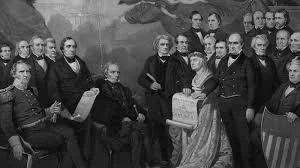 A set of laws to ease tensions between free and slave states, including California’s admission as a free state and a stricter Fugitive Slave Law. It temporarily reduced conflict between North and South. The South gained concessions, especially regarding slavery.
A set of laws to ease tensions between free and slave states, including California’s admission as a free state and a stricter Fugitive Slave Law. It temporarily reduced conflict between North and South. The South gained concessions, especially regarding slavery. -
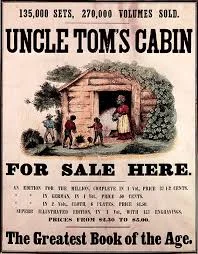 Harriet Beecher Stowe’s novel exposed the harsh realities of slavery to a wide audience. It fueled Northern opposition to slavery. Southerners criticized it as propaganda.
Harriet Beecher Stowe’s novel exposed the harsh realities of slavery to a wide audience. It fueled Northern opposition to slavery. Southerners criticized it as propaganda. -
 Frederick Douglass gave a famous speech questioning the morality of slavery in the United States. It inspired many in the North to oppose slavery. His words highlighted the injustice enslaved people faced.
Frederick Douglass gave a famous speech questioning the morality of slavery in the United States. It inspired many in the North to oppose slavery. His words highlighted the injustice enslaved people faced. -
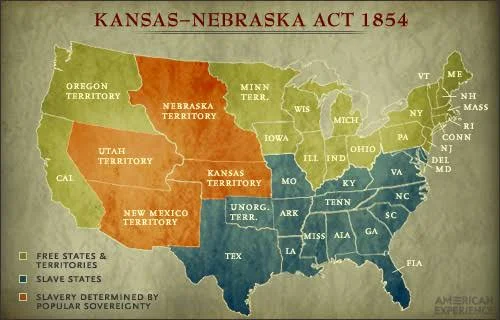 This law allowed settlers in Kansas and Nebraska to decide whether to allow slavery. It repealed the Missouri Compromise and angered many in the North. The act led to violent conflict in Kansas, known as “Bleeding Kansas.”
This law allowed settlers in Kansas and Nebraska to decide whether to allow slavery. It repealed the Missouri Compromise and angered many in the North. The act led to violent conflict in Kansas, known as “Bleeding Kansas.” -
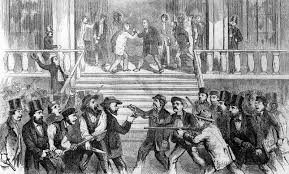 Pro- and anti-slavery settlers fought in Kansas over whether it would be a free or slave state. The violence showed that compromises over slavery were failing. It became a symbol of the growing sectional conflict.
Pro- and anti-slavery settlers fought in Kansas over whether it would be a free or slave state. The violence showed that compromises over slavery were failing. It became a symbol of the growing sectional conflict. -
 Dred Scott, an enslaved man, sued for his freedom, but the Supreme Court ruled he was not a citizen and could not sue. This decision strengthened the South’s position on slavery and angered the North. It increased tensions over slavery in the territories.
Dred Scott, an enslaved man, sued for his freedom, but the Supreme Court ruled he was not a citizen and could not sue. This decision strengthened the South’s position on slavery and angered the North. It increased tensions over slavery in the territories. -
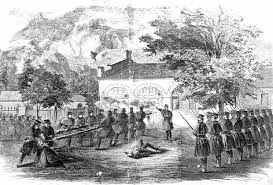 Abolitionist John Brown attempted to start a slave rebellion by raiding a federal arsenal in Virginia. The raid failed, and Brown was executed. Northerners admired his courage, while Southerners feared more uprisings.
Abolitionist John Brown attempted to start a slave rebellion by raiding a federal arsenal in Virginia. The raid failed, and Brown was executed. Northerners admired his courage, while Southerners feared more uprisings. -
 Abraham Lincoln won the presidential election without any Southern electoral votes. Northerners saw him as a leader who might limit slavery’s expansion. Southerners feared he would threaten their way of life.
Abraham Lincoln won the presidential election without any Southern electoral votes. Northerners saw him as a leader who might limit slavery’s expansion. Southerners feared he would threaten their way of life. -
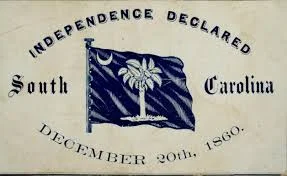 South Carolina became the first state to leave the United States after Abraham Lincoln’s election. This action marked the start of Southern secession. It led other Southern states to consider leaving the Union.
South Carolina became the first state to leave the United States after Abraham Lincoln’s election. This action marked the start of Southern secession. It led other Southern states to consider leaving the Union. -
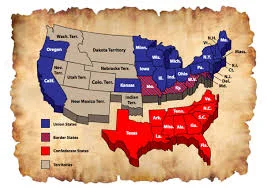 Seven Southern states joined together to form the Confederate States after seceding. Jefferson Davis was elected president. This formalized the Southern threat to leave the Union and made war more likely.
Seven Southern states joined together to form the Confederate States after seceding. Jefferson Davis was elected president. This formalized the Southern threat to leave the Union and made war more likely. -
 Confederate forces attacked Fort Sumter in South Carolina, starting the Civil War. The North saw it as a call to preserve the Union. The South gained early momentum and unity from this victory.
Confederate forces attacked Fort Sumter in South Carolina, starting the Civil War. The North saw it as a call to preserve the Union. The South gained early momentum and unity from this victory. -
ahdkjbkjbja
